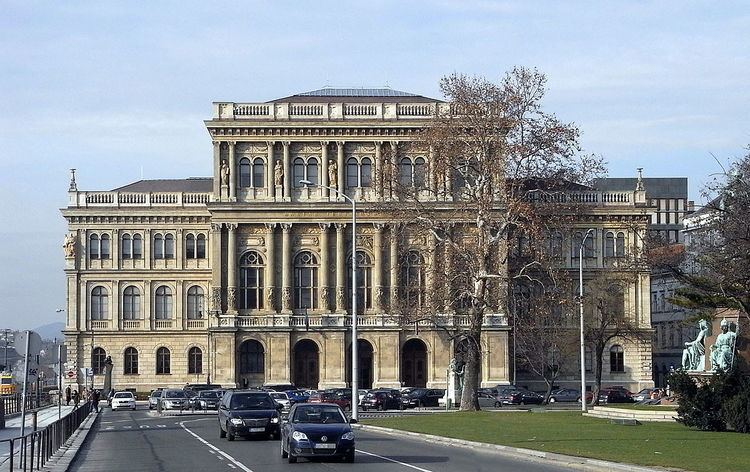Region served Hungary Phone +36 1 411 6100 | Membership 1,352 Founded 3 November 1825 | |
 | ||
Formation 3 November 1825; 191 years ago (1825-11-03) Founders György Andrássy, György Károlyi, Ábrahám Vay Profiles | ||
The Hungarian Academy of Sciences (Hungarian: Magyar Tudományos Akadémia (MTA)) is the most important and prestigious learned society of Hungary. Its seat is at the bank of the Danube in Budapest. Its main responsibilities are the cultivation of science, dissemination of scientific findings, supporting research and development and representing Hungarian science domestically and around the world.
Contents
- Deka keeps up 2 hungarian academy of sciences budapest hungary
- History
- Sections of the Hungarian Academy of Sciences
- Research institutes
- Szchenyi Academy of Literature and Arts
- References
Deka keeps up 2 hungarian academy of sciences budapest hungary
History
The history of the academy began in 1825 when Count István Széchenyi offered one year's income of his estate for the purposes of a Learned Society at a district session of the Diet in Pressburg (Pozsony, present Bratislava, seat of the Hungarian Parliament at the time), and his example was followed by other delegates. Its task was specified as the development of the Hungarian language and the study and propagation of the sciences and the arts in Hungarian. It received its current name in 1845.
Its central building was inaugurated in 1865, in Renaissance Revival architecture style. The architect was Friedrich August Stüler.
Sections of the Hungarian Academy of Sciences
A scientific section is a unit of the Academy organized by one or some closely related branches of science. A scientific section follows with attention, promotes and evaluates all scientific activities conducted within its field(s) of science; takes a stand on scientific issues as well as in matters concerning science policy and research organization, submits opinion on the activities of the Academy's research institutes, and on those of university chairs and other research units that are supported by the Academy, and participates in the procedure of awarding the title of Doctor of the Hungarian Academy of Sciences, the post-Ph.D academic degree, the D.Sc degree in Hungary.
Today it has eleven main sections:
Research institutes
Széchenyi Academy of Literature and Arts
The Széchenyi Academy of Literature and Arts (Hungarian: Széchenyi Irodalmi és Művészeti Akadémia) was created in 1992 as an academy associated yet independent from the HAS. Some of the known members are György Konrád, Magda Szabó, Péter Nádas writers, Zoltán Kocsis pianist, Miklós Jancsó, István Szabó film directors. The current president is Károly Makk, film director, who succeeded László Dobszay (resigned on April 20, 2011).
